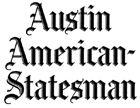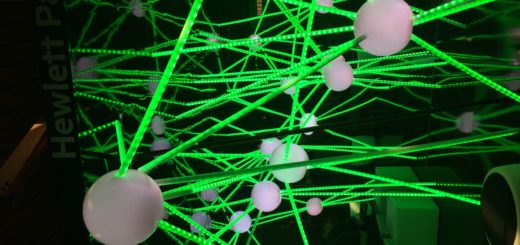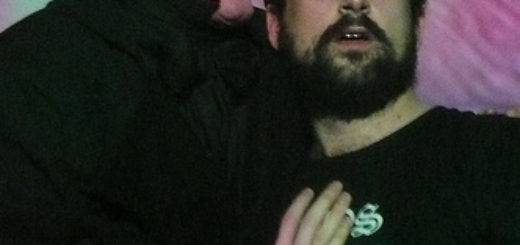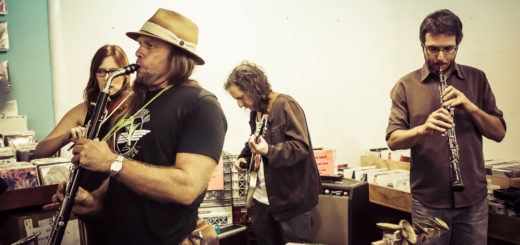Forensics: It’s more than CSI
 Last Monday, Sandip Gupta, 19, was having a rough evening. Days away from the national championship tournament, his training session was not going well. His broad face was sweating, his arm hurt, and he was growing frustrated as his coach, Jayme Meyer, 24, repeatedly watched him make the same mistake. Finally, she told him to go home and work on his visual aids.
Last Monday, Sandip Gupta, 19, was having a rough evening. Days away from the national championship tournament, his training session was not going well. His broad face was sweating, his arm hurt, and he was growing frustrated as his coach, Jayme Meyer, 24, repeatedly watched him make the same mistake. Finally, she told him to go home and work on his visual aids.
Visual aids? What kind of sport is this? It’s not a sport. It’s the University of Texas Forensics Union Individual Events Team, a.k.a. the speech team. Debate is the other half of that “forensics union.” (The term forensics coverers various aspects that could be presented before a court.) Although they share space, the teams don’t share coaches or competitors. They’re as separate as football and fencing.
Gupta’s visual aids are for his “Communication Analysis” (CA) speech. For this speech, he studied Dove’s “Real Beauty” ads, where Dove made a fuss about using average-sized women on its billboards.
He then analyzed Dove’s advertising campaign according to a complicated communications theory article on “commodity feminism,” which discussed how feminist values are spun to sell consumer products.
Gupta then transformed his research and analysis into a 10-minute text, then memorized it verbatim. He’ll be judged on his content and delivery.
Alas, there is bad news for Gupta’s CA. His speech now has brand-new and painfully heavy visual aids illustrating Dove’s campaign. At his training session, his blond wisp of a coach picked up one visual aid to demonstrate how maneuverable it was, before nearly dropping it from the unexpected weight. Foam core backing is heavier than poster board.
Gupta is one of 18 intense UT students, who, sometime late this evening, will finish their final day competing at the American Forensic Association National Individual Events Tournament at the University of Florida. I understand Gupta’s intensity, because I’ve been there myself.
During my first three years of college, I spent hours each week, researching, writing, memorizing, rehearsing and delivering speeches. On weekends, we hit the forensics “Tour de Podunkville,” including stops in Manhattan — er, that’s Manhattan, Kansas, and Norman, Oklahoma.
As wacky as it sounds, the forensics experience had an intensity I have never successfully explained to outsiders. We traveled together and socialized together. It was a cult without the religion. Charismatic coach Peter Pober was our cult leader before leaving UT for the lushly greenbacked shores of George Mason University.
Forensics was so all-consuming that it took years to drag myself away. My senior year, I forfeited my competition eligibility in order to judge at the national tournament, thus saving the under-funded Texas team some serious scratch in entry fees. For years afterward, I lurked around the team, judging at tournaments and peer-coaching After Dinner Speaking (ADS). ADS is a lighthearted speech on a serious topic, like advertising or the insurance industry. I didn’t cease and desist until enrolling in graduate school.
Until last week, I hadn’t been back to forensics in nearly a decade.
Over these last few days, I’ve felt like a retired circus pony, who, hearing the familiar music, is overcome with nostalgia for the lost spangles of her youth and begins moving to the music without realizing it.
This overcame me after spending much of this past Saturday watching 11 kinds of speeches at “Mock Nationals,” where the team presented the 66 events entered in the national tournament. Gupta’s CA counts as one such event. As things wound down around midnight, I gave the ADS coaches my cards, practically begging them to call. They didn’t call. They didn’t have to. I had installed myself in the “team room” like a sweater stuck to Velcro.
Last week, I watched Martin “Randy” Cox, director of Individual Events, coach the team. Cox and I joined the UT forensics program as undergraduates. We traveled together and even platonically shared an apartment. Now he’s the gently balding coach some students call “Daddy,” especially since the birth of his son Aidan four months ago.
Last Monday, Cox was working with the slender and dark-eyed Eric Cullather, 21, on Cullather’s “Poetry” entry. His entry is a montage of a dozen works by poets such as Pablo Neruda, the texts of which Cullather has painstakingly assembled into the story of a marriage gone wrong.
“It’s fragmented, risky and dangerous. I like it,” Cox said of Cullather’s program. Cox then adjusted nuances of characterization and pacing in Cullather’s performance. Afterwards, I asked Cullather why he invested such effort into forensics. “You are basically putting together a 10-minute movie and performing it live. It’s very underground. No one understands that we put in just as much work as any athlete,” he said.
This morning, like all athletes on game day, Gupta and Cullather will have appropriately suited up for the big game. They’ll spend this competition day in the stylish business attire de rigueur on the speech circuit.
Unlike the athletes competing for UT, Gupta and Cullather won’t be wearing burnt orange at their national tournament. That’s good. Despite their drive to stand out among the 470 competitors from 92 schools, no one wants to stand out because of a burnt orange blazer.






















